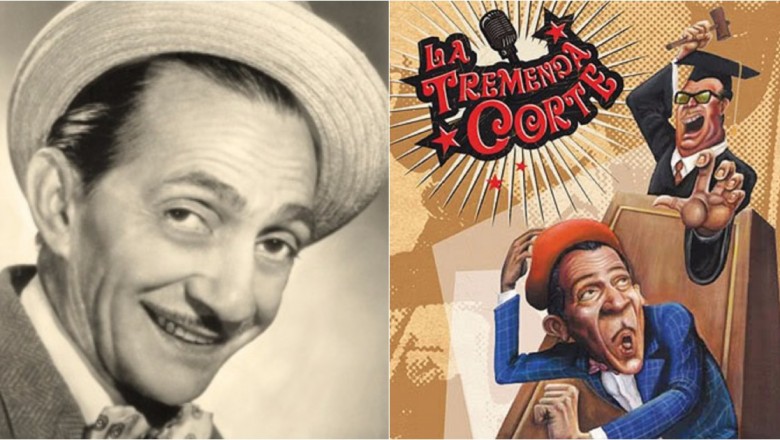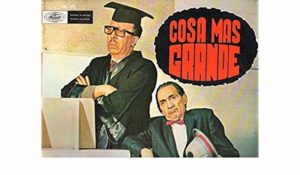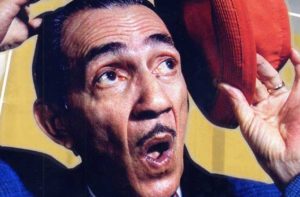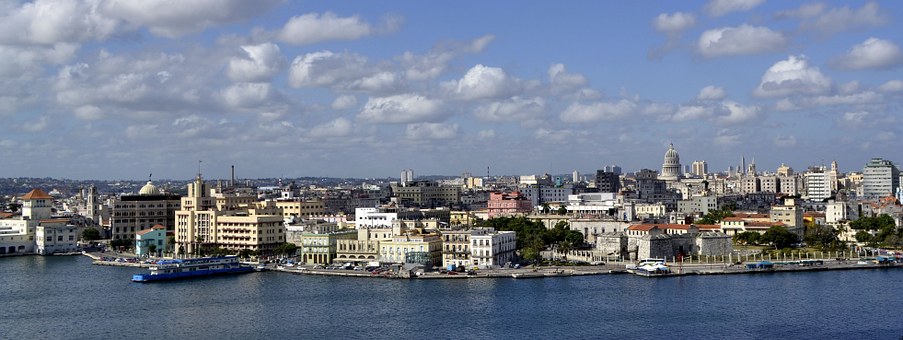 “LA TREMENDA CORTE” CON LEOPOLDO FERNÁNDEZ “TRESPATINES”.
“LA TREMENDA CORTE” CON LEOPOLDO FERNÁNDEZ “TRESPATINES”.
El programa original de radio ‘La Tremenda Corte’ fue creado en Cuba por el ingenioso y prolífico autor de comedia Cástor Vispo, un escritor que definitivamente mostraba un conocimiento profundo no solo del lenguaje (jugaba con los homófonos, sinónimos y sobre todo con la rima) sino que también de la idiosincrasia popular cubana. Los encargados de la dirección y producción del programa fueron Francisco Álvarez de Lara (Paco Lara) y Miguel Llao.
La transmisión del programa inicia en 1941 en la emisora radiofónica Radio Habana Cuba, (RHC “Cadena Azul”) del famoso Amado Trinidad Velasco, en ese entonces RHC pertenecía a la famosa empresa cigarrera Trinidad y Hermanos.
Un año después, en 1942, ‘La Tremenda Corte’ al igual que otros varios programas de su época, fue trasladado para la emisora competidora CMQ RADIO por sus anunciantes y patrocinadores, en busca de ventajas competitivas. Ya estando en CMQ, la primera transmisión al aire fue el 7 de enero de 1942, y es quizás por la propia popularidad de CMQ que se asocia esa fecha con el inicio del programa.
https://youtu.be/6fi208MJ36E
En esos años, a pesar de ser un programa dirigido a la audiencia cubana, contaba con una nutrida cantidad de oyentes más allá de sus fronteras. Se escuchaba en el Caribe, en Centroamérica y en parte de México.
Los programas se transmitían en ese entonces tres veces por semana de lunes a viernes a las 8:30 PM y eran patrocinados por una firma de productos de perfumería y jabones. Además gracias a las presentaciones simultáneas en el teatro, el éxito del programa se acrecentó, en especial si se toma en cuenta los rasgos característicos del espectáculo que eran los juegos con el lenguaje y el doble sentido, los cuales siempre hacían las delicias de los espectadores.
Para el año 1958 estalló la Revolución Cubana, situación que motivó a hacer un giro en la producción del programa. A pesar de los cambios, años después sucede un hecho que hace que el programa no pueda continuar. Es en octubre de 1960, que el gobierno revolucionario realiza una incautación de El Circuito CMQ y Radiocentro (ambos propiedad de los hermanos Mestre) y pasan a manos del Estado como parte del proceso de intervención estatal de los medios de comunicación. Esto provoca un fuerte revés en el medio artístico cubano ya que se cancelan todos los programas de humor que realizaban estas cadenas. La situación (en lo económico principalmente) propició que la nómina principal de La Tremenda Corte emigrara de Cuba ese año.
Se estima que poco más 300 grabaciones se pudieron sacar de Cuba y muchas de ellas datan del año ’58. Hasta la fecha gran parte de esas grabaciones todavía se escuchan por la radio en toda Latinoamérica, y se cree que hay algunos episodios que nunca han salido de la isla y por ende, se conoce poco o nada de ellos. De todos esos programas radiofónicos que se grabaron en la estación CMQ de La Habana, entre 1947 y 1961, nadie sabe con exactitud cuántos aún perviven.
Sin embargo las circunstancias de ese entonces no detuvieron a los protagonistas quienes tiempo después y lejos de Cuba llevaron el programa a la televisión, manteniendo el característico estilo que lo identificaba.
En aquella época los actores no recibían regalías por los derechos de copia del programa como sucede hoy, por lo que de forma astuta Abel Mestre, compró gran parte de los capítulos de La Tremenda Corte a un precio verdaderamente irrisorio. Luego esos mismos derechos los ofreció en venta a muchas de las principales estaciones de radio latinoamericanas de la época.
Sin llegar a exagerar, este ha sido uno de los programas de radio más ampliamente escuchados de los últimos años en muchos países de América. Es considerado por muchos conocedores en la materia, como la mejor comedia radiofónica producida en Latinoamérica para aquella época, y tanto ha sido su éxito, que incluso hoy en día sigue transmitiéndose en diversas emisoras de radio. Obviamente con el pasar de los años, el volumen de audiencia que hoy disfruta de programa ya no es tan numeroso como antes ni tan joven e identificado con el pasado como lo fue tiempo atrás.
 “LA TREMENDA CORTE” WITH LEOPOLDO FERNÁNDEZ “TRESPATINES”.
“LA TREMENDA CORTE” WITH LEOPOLDO FERNÁNDEZ “TRESPATINES”.
The original radio program ‘La Tremenda Corte’ was created in Cuba by the ingenious and prolific comedy author Cástor Vispo, a writer who definitely showed a deep knowledge not only of language (he played with homophones, synonyms and especially with rhyme ) but also of the Cuban popular idiosyncrasy. Those responsible for the direction and production of the program were Francisco Álvarez de Lara (Paco Lara) and Miguel Llao.
The transmission of the program began in 1941 on the radio station Radio Havana Cuba, (RHC “Cadena Azul”) of the famous Amado Trinidad Velasco, at that time RHC belonged to the famous cigar company Trinidad y Hermanos.
A year later, in 1942, ‘La Tremenda Corte’, like other programs of its time, was transferred to the competing radio station CMQ RADIO by its advertisers and sponsors, in search of competitive advantages. Since being in CMQ, the first transmission to the air was on January 7, 1942, and it is perhaps because of the popularity of CMQ that this date is associated with the beginning of the program.
In those years, despite being a program aimed at the Cuban audience, it had a large number of listeners beyond its borders. It was heard in the Caribbean, in Central America and in part of Mexico.
The programs were broadcast at that time three times a week from Monday to Friday at 8:30 PM and were sponsored by a perfume and soap products firm. In addition, thanks to the simultaneous presentations in the theater, the success of the program was increased, especially if one takes into account the characteristic features of the show that were the games with the language and the double meaning, which always made the delight of the spectators.
For the year 1958, the Cuban Revolution broke out, a situation that led to a turnaround in the production of the program. Despite the changes, years later an event occurs that makes the program cannot continue. It is in October 1960 that the revolutionary government seizes the CMQ Circuit and Radiocentro (both owned by the Mestre brothers) and passes into the hands of the State as part of the process of state media intervention. This provokes a strong setback in the Cuban artistic milieu since all the humor programs performed by these chains are canceled. The situation (mainly economic) led to the main payroll of La Tremenda Corte emigrating from Cuba that year.
It is estimated that just over 300 recordings were taken from Cuba and many of them date from the year ’58. To date, a large part of these recordings are still heard on the radio throughout Latin America, and it is believed that there are some episodes that have never left the island and, therefore, little or nothing is known about them. Of all those radio programs that were recorded at the CMQ station in Havana, between 1947 and 1961, nobody knows exactly how many still survive.
However, the circumstances of that time did not stop the protagonists who later and far from Cuba took the program to television, maintaining the characteristic style that identified it.
At that time the actors did not receive royalties for the copying rights of the program as it happens today, so astute Abel Mestre, bought much of the chapters of The Tremendous Court at a truly ridiculous price. Then he offered those same rights for sale to many of the major Latin American radio stations of the time.
Without exaggerating, this has been one of the most widely heard radio programs in recent years in many countries of America. It is considered by many connoisseurs in the field, as the best radio comedy produced in Latin America for that time, and so much has been its success, that even today continues to be broadcast on various radio stations. Obviously, with the passing of the years, the volume of the audience that today enjoys the program is not as numerous as before nor as young and identified with the past as it once was.
Agencies/ D’Cubanos/ Internet Photos/ YouTube/ Arnoldo Varona/ www.TheCubanHistory.com
THE CUBAN HISTORY, HOLLYWOOD.








